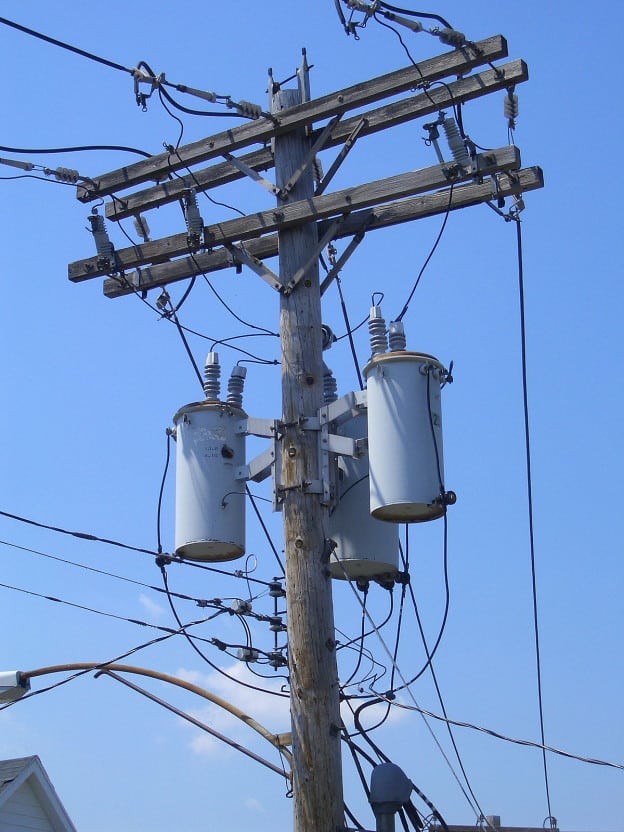Reconsider Distribution Transformer Efficiency Standards, Power Groups Urge DOE

Three major electric power trade groups in a letter on Feb. 15 urged the Department of Energy (DOE) to reconsider proposed energy efficiency conservation standards for distribution transformers, citing severe and ongoing supply chain challenges that have prolonged and complicated distribution transformer production and availability."
The letter was sent ahead of a public meeting scheduled on Feb. 16 that will discuss the DOE's Jan. 11-finalized notice of proposed rulemaking (NOPR). It was sent by the American Public Power Association (APPA), National Rural Electric Cooperative Association (NRECA), and Edison Electrical Institute (EEI), which represent an array of the nation's investor-owned and public power utilities and energy service providers, along with electric cooperative utilities.
APPA, NRECA, and EEI were joined by the GridWise Alliance and the National Electrical Manufacturers Association (NEMA), which represent grid component manufacturers. The Leading Builders of America (LBA) and the National Association of Homebuilders (NAHB), which represent homebuilder construction entities, also joined the letter.
A Substantial Proposal, Delivered Amid a Transformer ShortageThe DOE's 448-page proposed rule seeks to reduce losses in three types of distribution transformers-liquid-immersed, low-voltage dry-type (LVDT), and medium-voltage dry-type (MVDT) distribution transformers-through specific percentage-based energy efficiency standards. The proposed standards will apply to distribution transformer units manufactured in, or imported into, the U.S. starting in 2027, three years after the rule is finalized, likely in 2024.
U.S. Energy Secretary Jennifer Granholm has said the rule is necessary to ensure distribution transformers, a critical component" of the U.S. electricity system, would operate as efficiently and inexpensively as possible." Modernizing the components' energy conservation standards would enhance the resilience of our nation's energy grid and make it possible to deliver affordable electrical power to consumers in every corner of America," she said in December.
The DOE suggests that if finalized, the proposed standards would reduce U.S. CO2 emissions by 340 million metric tons over the next 30 years-an amount roughly equal to the annual emissions of 90 coal-fired power plants." They could also generate over 10 quads of energy savings and approximately $15 billion in savings to the nation from 30 years of shipments."
However, achieving the standards and effectively reducing distribution transformer losses will require an overhaul of the makeup of essential distribution transformer components, the DOE acknowledges. The proposed standards, notably, would require almost all transformers to feature amorphous steel cores, which are significantly more energy efficient than those made of traditional, grain-oriented electrical steel," the DOE said.
Medium-voltage liquid-immersed distribution transformers are typically purchased by electric utilities. Consumers for low- and medium-voltage dry-type distribution transformers are typically commercial and industrial entities.
In their letter on Wednesday, the groups said, The proposed rule would dictate that manufacturers increase the efficiency of distribution transformers by a mere tenth of a percentage point." However, the DOE already mandates distribution transformers be manufactured at incredibly high-efficiency standards," the groups noted.
Currently, NEMA calculates a three-phase liquid-immersed distribution transformer with a kilovolt-ampere (kVA) output rating of 2500 is already 99.53% efficient; a similar single-phase type with a kVA of 833 is 99.55% efficient," they said. Importantly, due to the intricate ways transformers are designed and assembled, increasing their efficiency even by a fraction of a percentage point could add months to an already lengthy order-cycle."
Historic and Extreme Supply Chain Challenges'NRECA on Tuesday in a statement to POWER underscored the widespread impact the standards could have on reliability. The electric industry is grappling with historic and extreme supply chain challenges, and distribution transformer availability has been particularly impacted," it said. It noted that orders for distribution transformers that previously were filled in two to four months now take between 22 to 33 months to complete.
In the letter, the groups said under existing production output capabilities, manufacturers estimate the current order-cycle for most new distribution transformers to be longer than 16 months. The groups in their letter noted they have communicated concerns about distribution supply chain challenges to the DOE since 2021. The inability to quickly manufacture and deliver these critical components threatens the ability of the electric sector to service current and planned housing markets, swiftly recover and restore service following natural disasters, and deliver the benefits of economy-wide electrification," the letter says.
A Tiger TeamThe DOE, for its part, in June 2022 directed the Electricity Subsector Coordinating Council, a CEO-led liaison between the federal government and the power industry, to establish a Tiger Team" to examine the supply chain crisis. In their letter, the groups noted the Tiger Team concluded that current transformer production is not meeting demand-demand that is expected to increase for the foreseeable future."
On June 6, 2022, the Biden administration also issued a presidential determination through the Defense Production Act (DPA) to prioritize the domestic production of transformers. In response to the determination (and through a DOE request for information), manufacturers recommended several ways the production of transformers could be scaled up. One such proposal included the standardization of 'emergency-use' products, or transformers built to lower energy conservation standards to meet DPA expectations of greater output," the groups said.
Similarly, in a joint letter to you by APPA and NRECA on October 19, 2022, these organizations encouraged DOE to reprioritize some Inflation Reduction Act funds under the DPA designated for heat pumps to distribution transformer production, including labor recruitment and retention." Despite this information, the DOE issued the NOPR, which, would, through its various requirements, further exacerbate the supply chain situation," they added.
-Sonal Patelis a POWER senior associate editor (@sonalcpatel,@POWERmagazine).
The post Reconsider Distribution Transformer Efficiency Standards, Power Groups Urge DOE appeared first on POWER Magazine.